I had never played a NieR game before this, but the haunting music of the franchise was my constant companion the last few years as I endured the laborious task of teenage mugging.
Like the din of the cricket chirp, NieR Replicant ver.1.22474487139…(it is actually the square root of 1.5) starts off slow, unvaried. When I watched the first few cutscenes, I cringed slightly at Yonah’s coughing – personally, it seemed a little too contrived. To me, many of the cutscenes lacked subtlety.
But what Nier Replicant lacks in nuance, it more than makes up for in its sincerity.
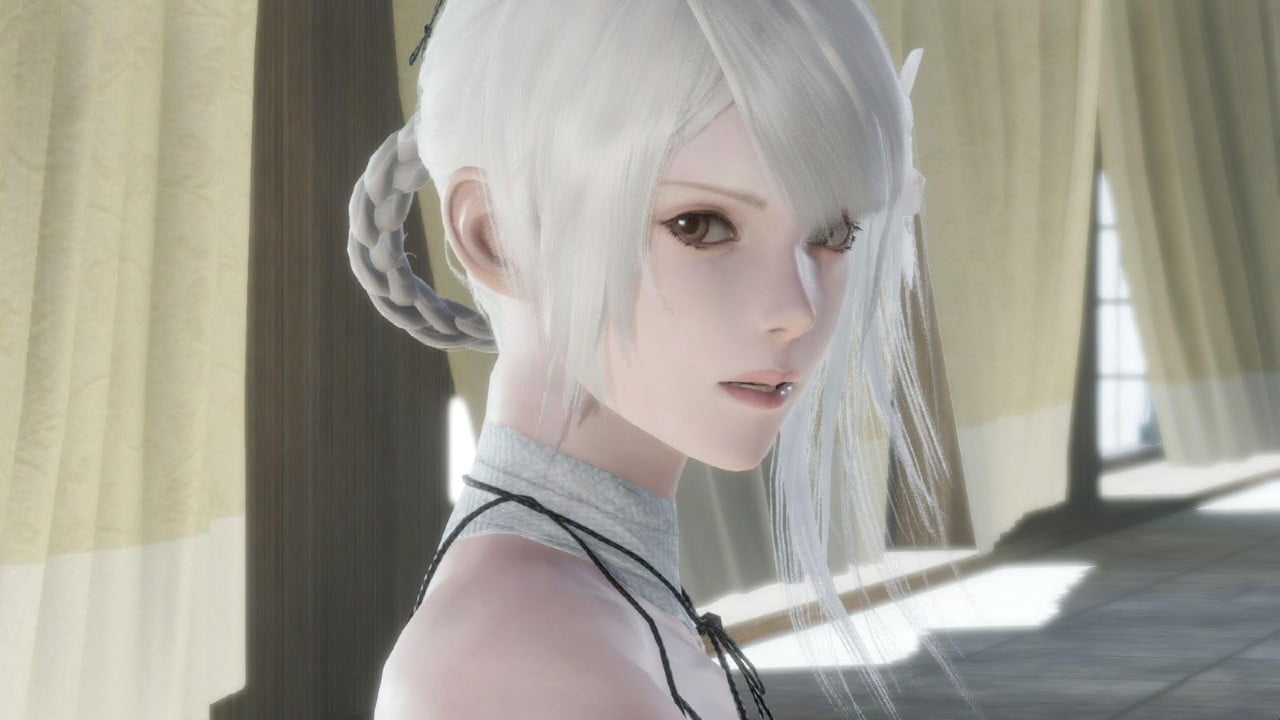
She is every dude’s favourite character, and it’s not just because she looks pretty.
Set in a period before the events of Automata unfolded, you play as the titular character, Nier, or whatever you name him, who is on a quest to save his sister from the Black Scrawl – a mysterious disease that bears resemblance to the Black Death in the 1300s. Soon, you discover shades – spirits roaming the land – that threaten the peace of your idyllic village. At first, the gameplay is repetitive – you need to move from one mundane quest to another, often requiring much running around and killing the same critters on your way to your destination.
The turning point comes in after a several-year time skip. The pace quickly picks up, launching you into a hurried quest to acquire a collection of items to advance the plot.
The story at first seems predictable – use one magical book to defeat another as legends professed, then kill the main villain to save your sister.
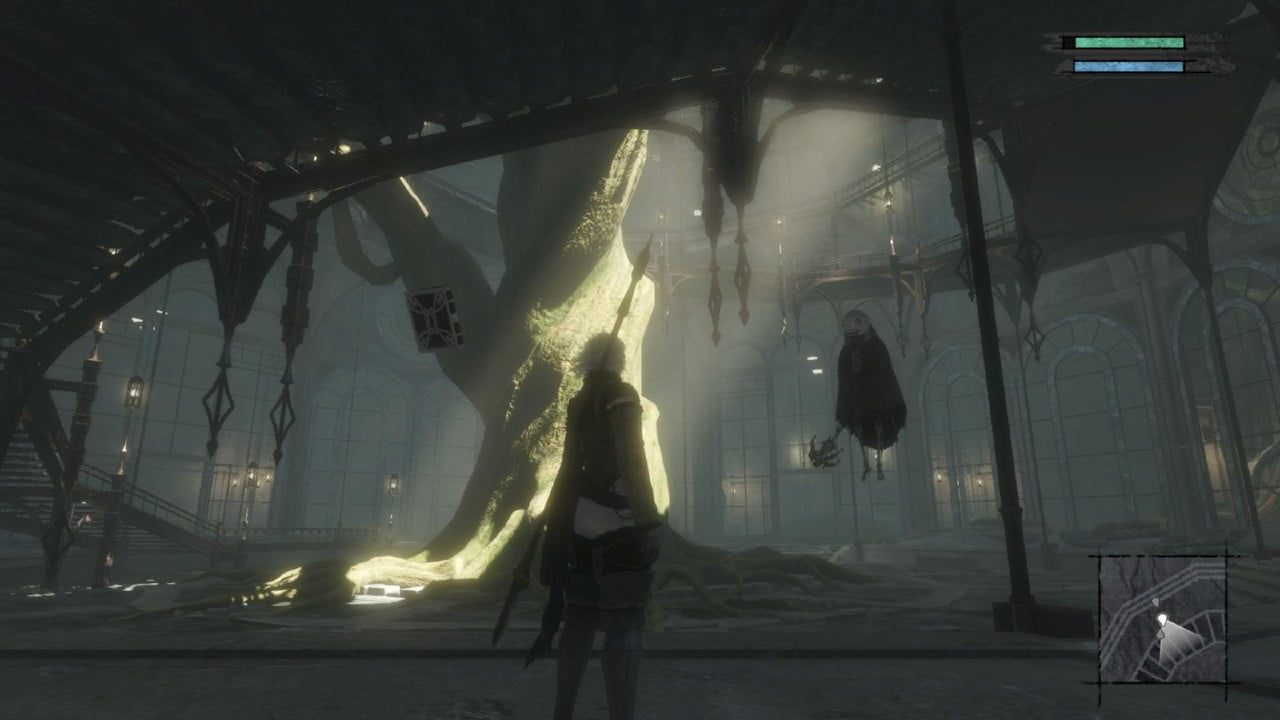
The atmosphere of the game often has a haunting effect.
And when you finally deliver the coup de grace to the final boss and watch the “final” cutscenes, it feels like you have reached the end of your momentous journey, with epic music playing as you admire the hundreds, maybe thousands, of names of artists and programmers when the credits roll. You feel a sense of hard-earned closure – until you discover, like hitting the maximum level in an MMORPG, that the quest has really just begun.
You find that things are not what they seem. After reaching the first ending, you can then repeat the second half of the game and fulfil special requirements to obtain all possible endings. Each adds a new layer of depth to the story and its characters, keeping every playthrough fresh while giving you a more detailed perspective. You might not care about the giant shades or robots you plough through the first time, but I promise you will feel at least a hint of sadness the second time you do.
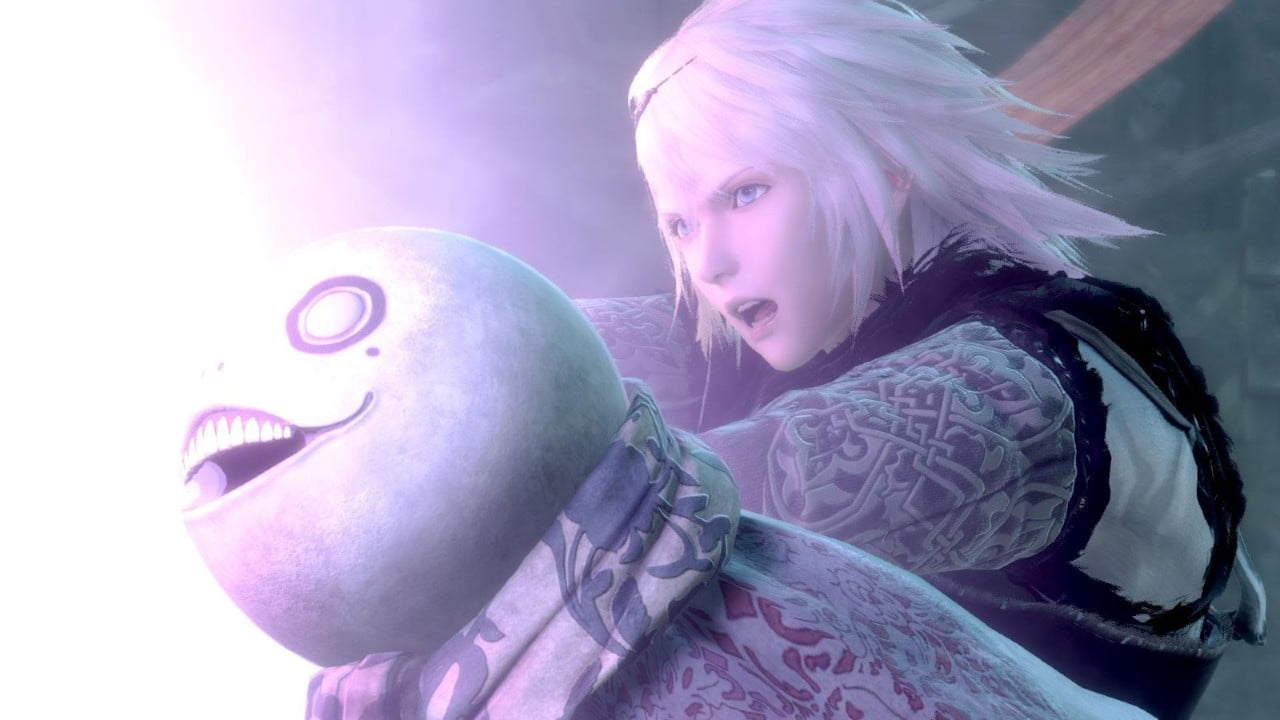
Emil was a boy but an experiment to gain more power ended badly and now he looks like a fleshy skeleton.
The characters are varied and have interesting histories. Like many JPRGs, no detail is spared in painting a portrait of the characters. The game makers ensure that you know every background story, hear every cough, and witness every emotion of your companions.
During your journey, you travel with three: Kainé, a foul-mouthed yet well-intentioned outcast whose main defining trait was her attire, or lack of, in the beginning; Emil, a kind-hearted child who wields terrifying magic, and Grimoire Weiss, an amusingly haughty ancient book of wisdom.
At the start of the game, they seem to be rather one-note. But as you continue, you discover their backstories and how past events moulded them into the people/books they are during the current timeline, developing them into more complex, relatable characters. Kainé and Emil seem to be different as chalk and cheese; though they were friendly towards one another at the beginning, I did not expect to see much development in their relationship. Which was more surprising when it eventually did and far deeper than I expected. Weiss is surprisingly much more human than I thought a dusty old tome could ever be and I love that.
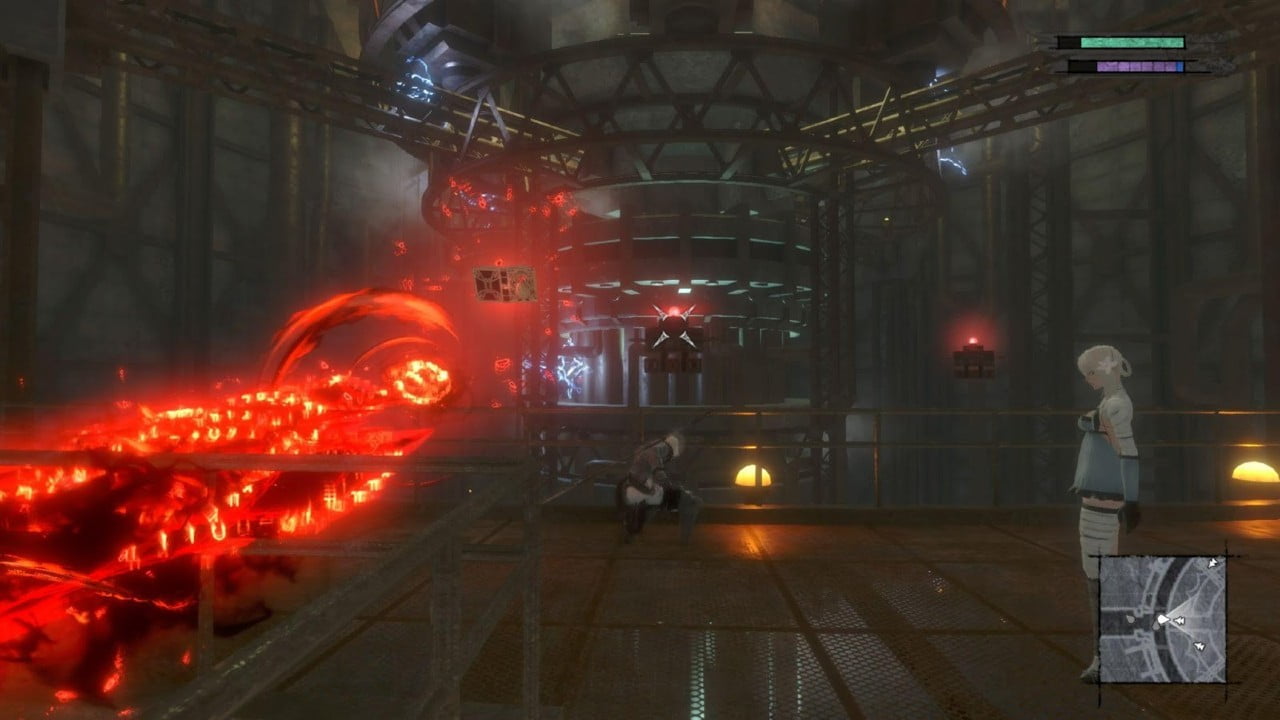
My favourite magic attack, Dark Lance, that sends bolts of energy that homes onto enemies and take them out in force.
Combat and gameplay
The controls are extremely tight and responsive. Combat is quick, and the movements and attacks of the character are very satisfying to execute. Physical attack combos, whether it be with a spear or two-handed sword, are fluid with every swing and slash connecting rhythmically to the next. Magic attacks are equally as fun to use – the colours and animations for these attacks are sharp and expertly convey their impact and strength.
The menus are clean and easy to navigate. Whether you want to switch weapons or add equipment buffs, the interface succeeds in maximising functionality while retaining a simple design.
I enjoyed the experimental nature of NieR Replicant. Even though it is primarily an action RPG, it integrates many other genres into its gameplay. These include text-based choose-your-own-adventure sequences, rooms displayed with camera angles found in 2D platformers like Hollow Knight, and arcade-style bullet hell. I particularly liked the text-based segment at the Forest of Myth – the riddles were fun to decipher and playing through it made me feel like I was reading a Japanese light novel.
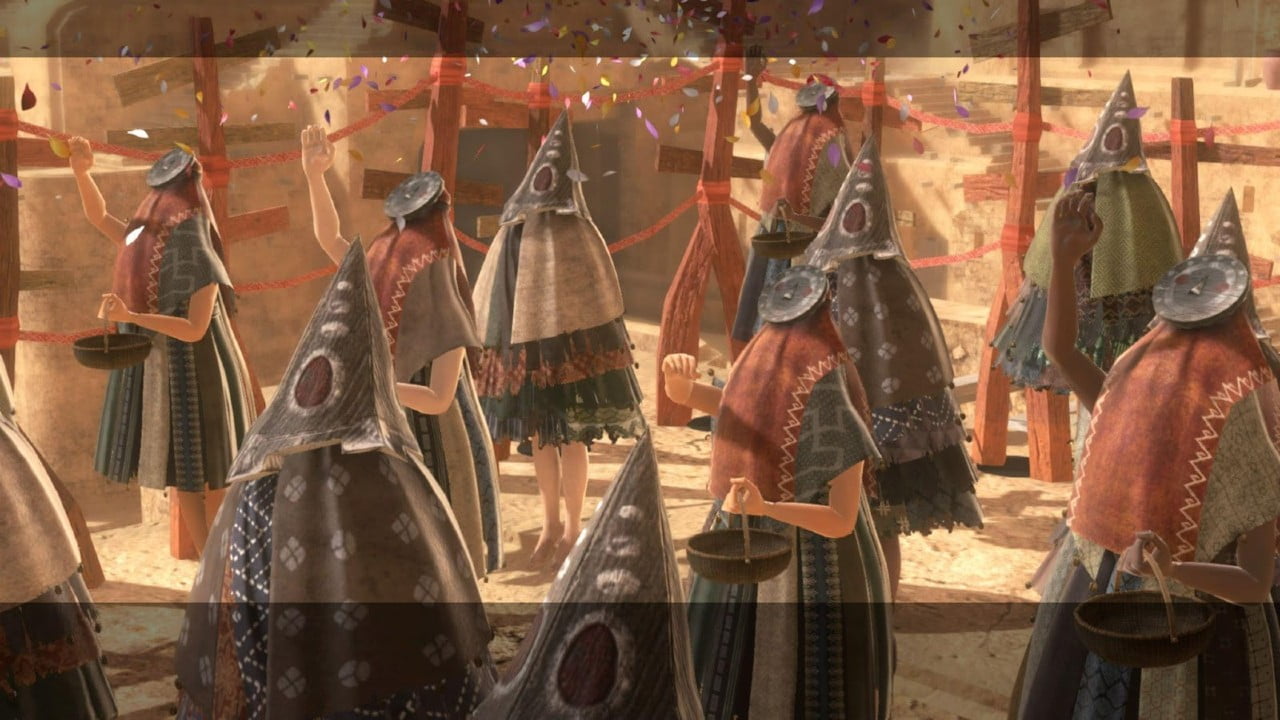
Meet different characters from various cultures in the game.
My only gripes with Replicant are the slow pacing during the start and the repetitive nature of the side quests, with exception of the Boar Hunt quest that allows you to acquire a mount. Fortunately, the side quests are not required to finish the game, which is a huge plus for me.
If you want to take a break from fighting baddies and slow down a bit, there are other activities you can indulge in, such as fishing and gardening.
NieR Replicant was daring and took big risks – leaving with great returns.
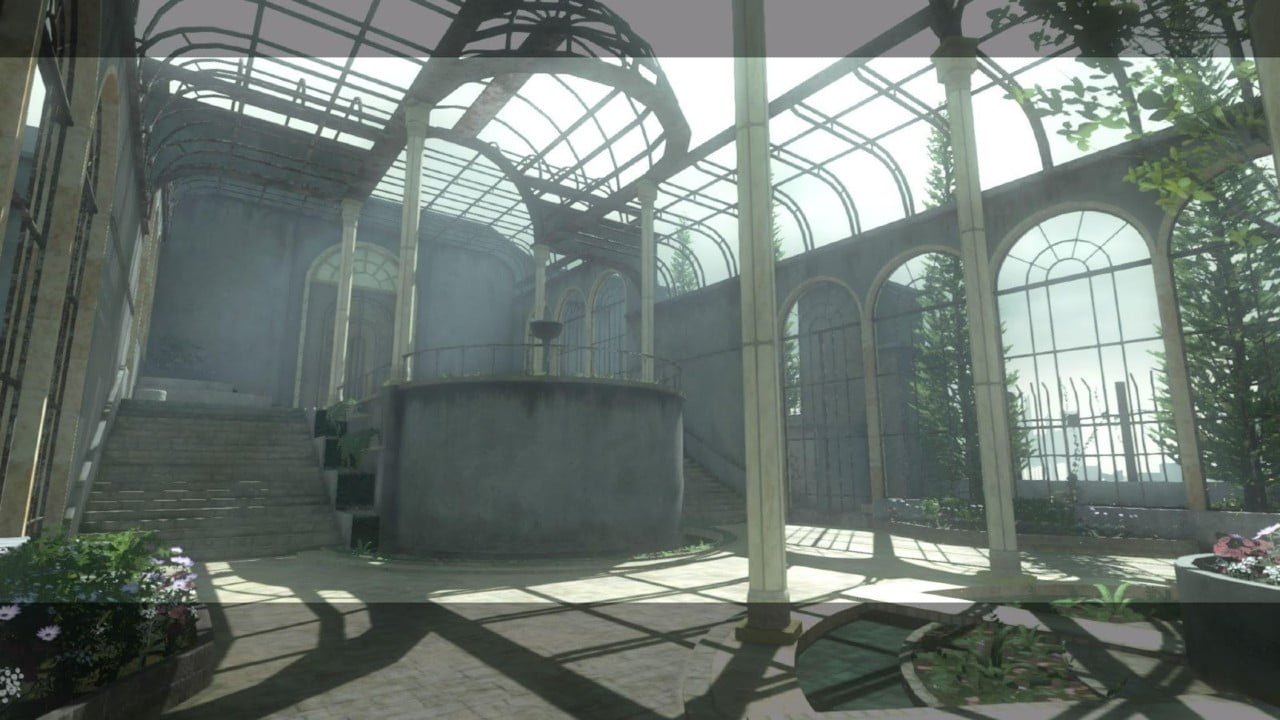
It may look peaceful but beyond the doors lie grave danger.
Graphics, art, music
The music of Replicant is beautiful. From the swelling of the orchestra during pivotal battles to haunting choral arrangements sung by Emi Evans to tender, melancholic harmonies, Keiichi Okabe is a master in creating emotionally compelling and powerful music that resonates with the players. For fans of previous instalments of the series, there is even an option to change the soundtrack to that from NieR: Automata.
According to an interesting interview by NME , Okabe designed the music to express the Japanese concept of “agaku”, which means to struggle. He strove to embody the multi-faceted nature of human emotions in his music to reflect that the world of Nier “has many faces.”
Rendered by an in–house engine, the art is pleasant to the eyes and smooth. In key areas, the lighting is bright and soft, contributing to the sombre yet hopeful atmosphere of the game.
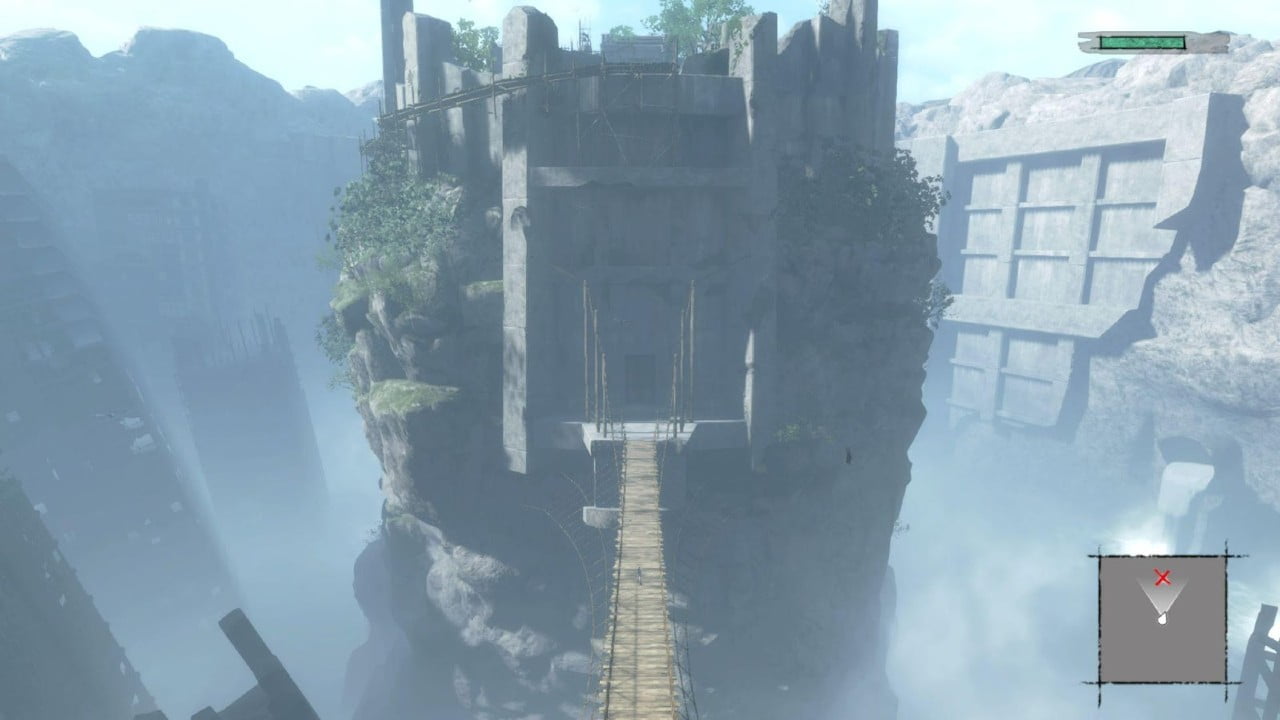
The decaying bridge leading to an ancient monument.
I was excited when I was greeted with the sight of a huge, sprawling tree upon entering the Lost Shrine. From the hulking machinery of the Junk Heap to the serene greenery within the Forest of Myth, key environments within the game are unique, each with their own character and feel. My favourite in-game location is the Facade, a desert city populated by masked people who abide closely by an absurd number of rules (over 124,000).
Personally, the enemies may be quite similar to one another and encountering them over and over again can be a little repetitive.
The boss fights are fun, albeit not really difficult to finish. I think that the healing items within the game are too strong and take away some tension in these fights. But still, defeating the bosses was satisfying and rewarding.
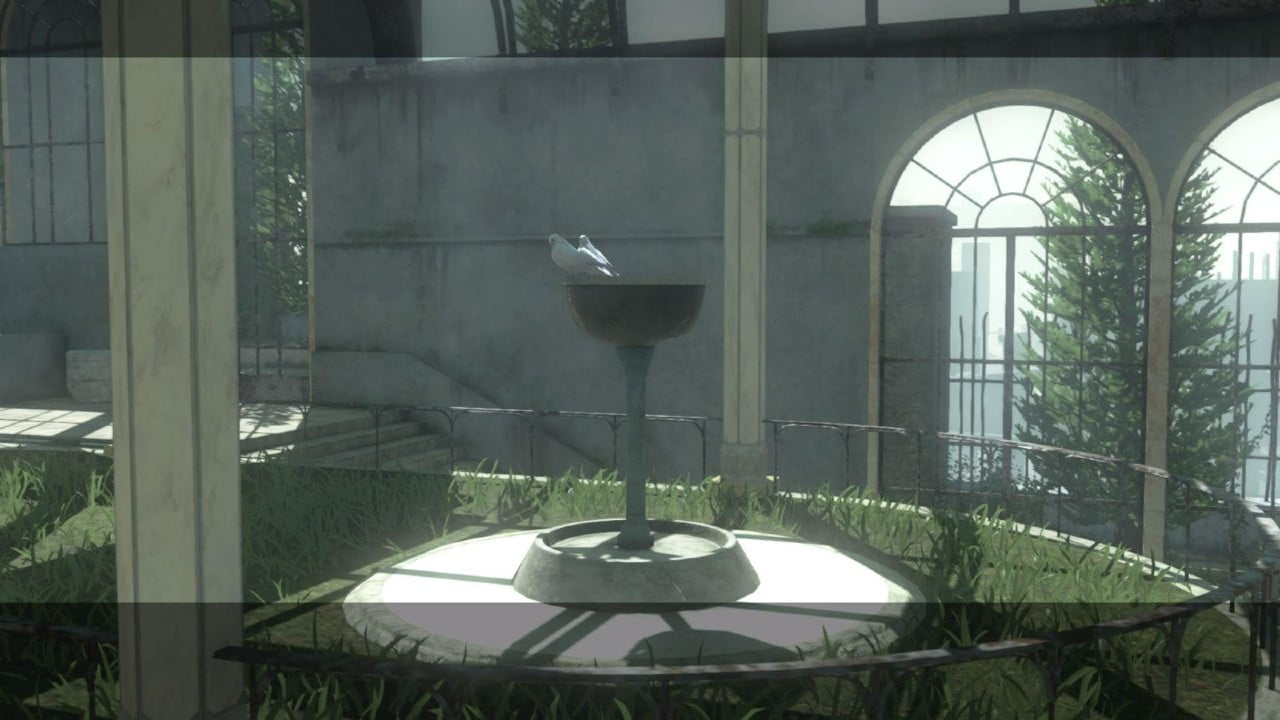
The birds are not just ornaments, they are riddle masters who control the way to the final fight.
Like A levels, hard work pays off. Even though the game has ended, the music will forever be with me.
NieR Replicant is an awesome game and I would recommend it to anyone who is a fan of the JRPG genre.
NieR Replicant
Graphics – 7/10
Plot – 9/10
Gameplay – 9/10
With a beautifully crafted plot and cast of characters, NieR Replicant delivers an emotionally-rich story which makes you root for everyone, whether it be friend or foe.
